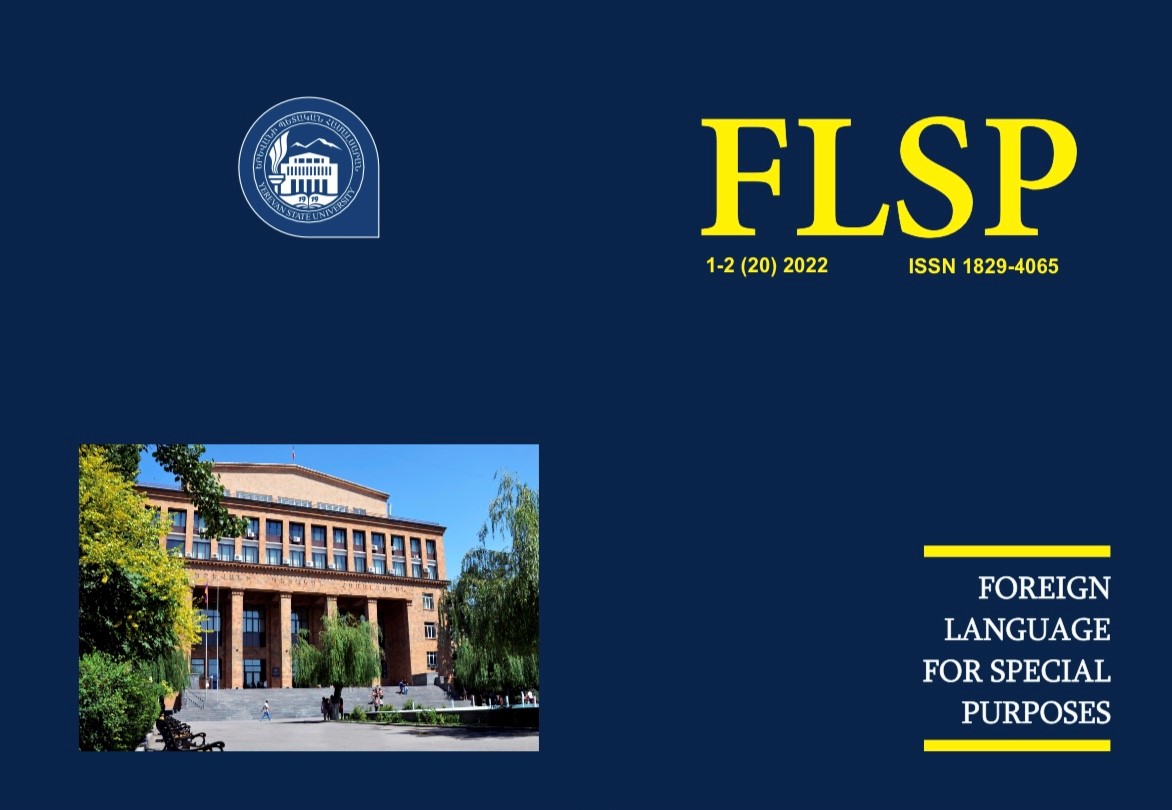PROBLEMS OF SEMANTIC TRANSLATION OF LEGAL DOCUMENTS FROM FUNCTIONAL – COMMUNICATIVE PERSPECTIVE
DOI:
https://doi.org/10.46991/flsp.v20i1-2.8948Keywords:
legal documents, legal translation, problems in translation, semantic equivalence, pragmatic application,, law, language of lawAbstract
In our reality, international relations play an important role and are more active than ever. It is noteworthy that international law has a regulatory power to maintain relations between organizations and states. Hence, international communication between countries, states, societies requires not only accurate documentation but also an accurate translation of documents from one language to another. In this regard, translation and interpretation of legal documents have become a serious act in human interactions. It can be said that legal translation has become a significant translating procedure in international relations and in different professional fields. However, legal translation and interpretation do not have an easy solution. When translating such materials, the translator should not allow the interpretation of legal errors as the consequences can be fatal. Legal translation also involves very complex and specialized terminology. For this reason, legal translation requires a skilled specialist, who has a deep knowledge in the field. Thus, in this article through the methods of contextual, deductive and comparative analyses we will try to present problems and offer solutions to proper legal document translation on the semantic level.
References
Alimov, V. V. (2005). A Practical Course in Legal Translation. Moscow: KomKniha.
Chirila, C. and Mindreci, G. (2013). Linguistic Changes in the Context of European Regional Development. Management Strategies Journal, 4 (special issue), 185-189.
Cornelius, E. (2011). The Curious Case of Legal Translation. Literator, 32 (1), 121-143.
Galdia, M. (2013). Strategies and Tools for Legal Translation. Comparative Legilinguistics, 16, pp. 77-94.
Hamilton, V. E. (2016). Adulthood in Law and Culture. Williamsburg: William & Mary School of Law.
Newmark, P.(1981) Approaches to Translation. Oxford: Pergamon Press.
Newmark, P. (2005) A Textbook of Translation. London: Longman.
Postan, L. (2019). Difficulties of Legal Translation. Legal Translation. URL: https://www.getblend.com/blog/legal-translation-difficulties/
Sarcevic, S. (1997). New approach to legal translation. The Hague: Kluwer Law International.
Sarcevic, S. (2000). Legal Translation and Translation Theory: A Receiver oriented Approach. URL: http://www.tradulex.org/Actes2000/sarcevic.pdf
Schroth, P. (1986). Legal Translation. American Journal of Comparative Law, 34, 47-65.
Downloads
Published
Issue
Section
License
Copyright (c) 2022 Foreign Languages for Special Purposes

This work is licensed under a Creative Commons Attribution-NonCommercial 4.0 International License.
Creative Commons Attribution-Non-Commercial (CC BY-NC). CC BY-NC allows users to copy and distribute the article, provided this is not done for commercial purposes. The users may adapt – remix, transform, and build upon the material giving appropriate credit, providing a link to the license. The full details of the license are available at https://creativecommons.org/licenses/by-nc/4.0/

